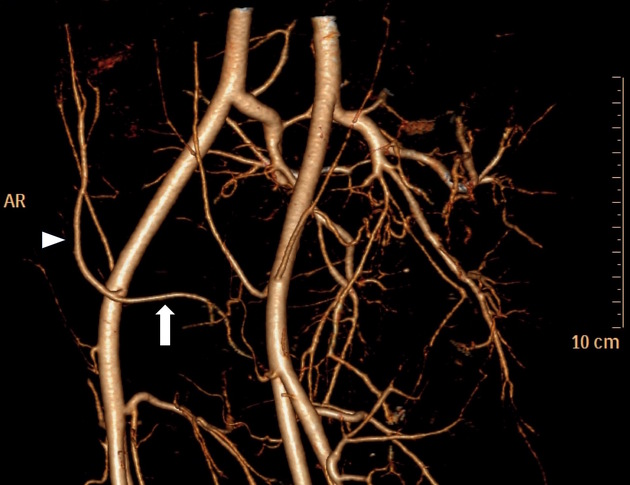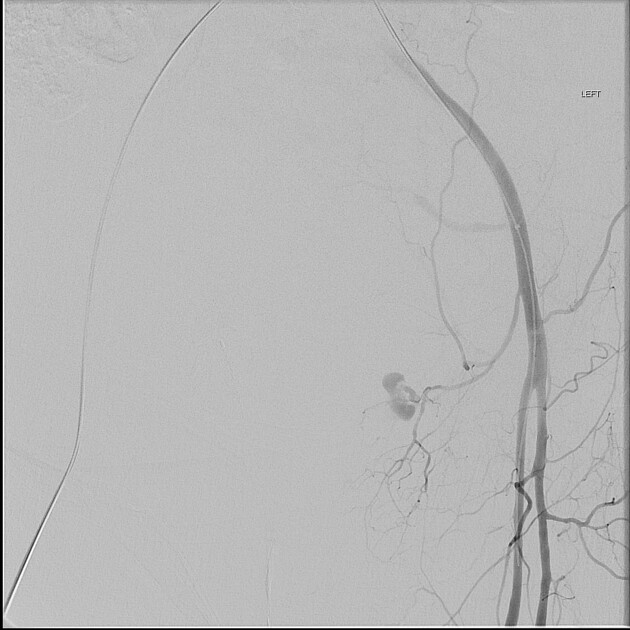Corona mortis
Citation, DOI, disclosures and article data
At the time the article was created Charlie Chia-Tsong Hsu had no recorded disclosures.
View Charlie Chia-Tsong Hsu's current disclosuresAt the time the article was last revised Rohit Sharma had no financial relationships to ineligible companies to disclose.
View Rohit Sharma's current disclosures- Crown of death
- Arterial corona mortis
Corona mortis, also known as the crown of death, is a common variant arterial anastomosis between either the external iliac artery or deep inferior epigastric artery and the obturator artery. Injury to this anastomosis (e.g. due to pubic ramus fractures) may cause significant hemorrhage.
On this page:
Terminology
In the literature, some authors use 'corona mortis' to refer to two different arterial and venous anastomoses in the pelvis, differentiating between an arterial corona mortis and a venous corona mortis, whereby the latter refers to a venous anastomosis between the obturator vein and either the external iliac vein or inferior epigastric vein 6. This article focuses on the arterial corona mortis.
Epidemiology
The corona mortis is reported to be present in 33% of patients on routine multidetector CT examination 1,4. One study of 100 patients found the variant to be more common in females and more commonly unilateral than bilateral (2:1) 5.
ADVERTISEMENT: Supporters see fewer/no ads
Radiographic features
The anastomosing vessel is reported to be found ~50 mm (range 35-72 mm) from the pubic symphysis 5. The vessel itself ranges in diameter from 1.4-3.7 mm and may be occluded in patients with peripheral vascular disease 5.
Clinical importance
Knowledge of this variant arterial anastomosis is critical for surgical planning and in pelvic trauma, as it is highly susceptible to injury given its posterior relation to the superior pubic rami 2.
See also
References
- 1. Smith JC, Gregorius JC, Breazeale BH et-al. The corona mortis, a frequent vascular variant susceptible to blunt pelvic trauma: identification at routine multidetector CT. J Vasc Interv Radiol. 2009;20 (4): 455-60. doi:10.1016/j.jvir.2009.01.007 - Pubmed citation
- 2. Darmanis S, Lewis A, Mansoor A et-al. Corona mortis: an anatomical study with clinical implications in approaches to the pelvis and acetabulum. Clin Anat. 2007;20 (4): 433-9. doi:10.1002/ca.20390 - Pubmed citation
- 3. Pua U, Teo LT. Prospective diagnosis of corona mortis hemorrhage in pelvic trauma. J Vasc Interv Radiol. 2012;23 (4): 571-3. doi:10.1016/j.jvir.2011.12.018 - Pubmed citation
- 4. Berberoğlu M, Uz A, Ozmen MM et-al. Corona mortis: an anatomic study in seven cadavers and an endoscopic study in 28 patients. Surg Endosc. 2001;15 (1): 72-5. Pubmed citation
- 5. Steinberg EL, Ben-Tov T, Aviram G, Steinberg Y, Rath E, Rosen G. Corona mortis anastomosis: a three-dimensional computerized tomographic angiographic study. Emergency radiology. doi:10.1007/s10140-017-1502-x - Pubmed
- 6. Kashyap S, Diwan Y, Mahajan S, Diwan D, Lal M, Chauhan R. The Majority of Corona Mortis Are Small Calibre Venous Blood Vessels: A Cadaveric Study of North Indians. Hip Pelvis. 2019;31(1):40-7. doi:10.5371/hp.2019.31.1.40 - Pubmed
Incoming Links
Related articles: Anatomy: Abdominopelvic
- skeleton of the abdomen and pelvis
- muscles of the abdomen and pelvis
- spaces of the abdomen and pelvis
- anterior abdominal wall
- posterior abdominal wall
- abdominal cavity
- pelvic cavity
- perineum
- abdominal and pelvic viscera
- gastrointestinal tract
- spleen
- hepatobiliary system
-
endocrine system
-
adrenal gland
- adrenal vessels
- chromaffin cells
- variants
- pancreas
- organs of Zuckerkandl
-
adrenal gland
-
urinary system
-
kidney
- renal pelvis
- renal sinus
- avascular plane of Brodel
-
variants
- number
- fusion
- location
- shape
- ureter
- urinary bladder
- urethra
- embryology
-
kidney
- male reproductive system
-
female reproductive system
- vulva
- vagina
- uterus
- adnexa
- Fallopian tubes
- ovaries
- broad ligament (mnemonic)
- variant anatomy
- embryology
- blood supply of the abdomen and pelvis
- arteries
-
abdominal aorta
- inferior phrenic artery
- celiac artery
- superior mesenteric artery
- middle suprarenal artery
- renal artery (variant anatomy)
- gonadal artery (ovarian artery | testicular artery)
- inferior mesenteric artery
- lumbar arteries
- median sacral artery
-
common iliac artery
- external iliac artery
-
internal iliac artery (mnemonic)
- anterior division
- umbilical artery
- superior vesical artery
- obturator artery
- vaginal artery
- inferior vesical artery
- uterine artery
- middle rectal artery
-
internal pudendal artery
- inferior rectal artery
-
perineal artery
- posterior scrotal artery
- transverse perineal artery
- artery to the bulb
- deep artery of the penis/clitoris
- dorsal artery of the penis/clitoris
- inferior gluteal artery
- posterior division (mnemonic)
- variant anatomy
- anterior division
-
abdominal aorta
- portal venous system
- veins
- anastomoses
- arterioarterial anastomoses
- portal-systemic venous collateral pathways
- watershed areas
- arteries
- lymphatics
- innervation of the abdomen and pelvis
- thoracic splanchnic nerves
- lumbar plexus
-
sacral plexus
- lumbosacral trunk
- sciatic nerve
- superior gluteal nerve
- inferior gluteal nerve
- nerve to piriformis
- perforating cutaneous nerve
- posterior femoral cutaneous nerve
- parasympathetic pelvic splanchnic nerves
- pudendal nerve
- nerve to quadratus femoris and inferior gemellus muscles
- nerve to internal obturator and superior gemellus muscles
- autonomic ganglia and plexuses








 Unable to process the form. Check for errors and try again.
Unable to process the form. Check for errors and try again.